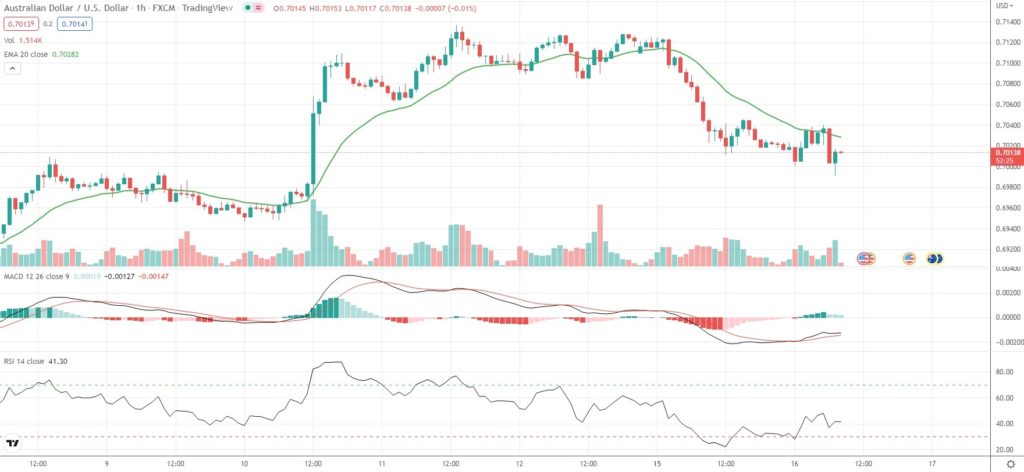AUD/USD extended losses on Tuesday, as disappointing macro data reinforced recession concerns, triggering a move into safe haven assets.
China’s industrial production, retail sales and fixed-asset investment data prints, reported on Monday, all fell short of market consensus, signaling a nascent recovery from strict COVID-19-related lockdowns seemed to have faltered.
In the US, the NAHB housing market index registered a decline for an 8th consecutive month in August, falling to a reading of 49 – its lowest level since May 2020.
“Tighter monetary policy from the Federal Reserve and persistently elevated construction costs have brought on a housing recession. The total volume of single-family starts will post a decline in 2022, the first such decrease since 2011,” NAHB Chief Economist Robert Dietz said.
At the same time, business activity in the New York State shrank sharply in August, as new orders and shipments plummeted. The New York Empire State Manufacturing Index plunged to a reading of -31.3 in August, which has been its weakest level since May 2020.
Meanwhile, the Minutes of the Reserve Bank of Australia’s policy meeting in August showed that headline inflation in Australia was expected to accelerate further during the second half of the year, while underlying inflation was expected to peak at around 6% at the end of 2022.
“The board expects to take further steps in the process of normalizing monetary conditions, but it is not on a pre-set path,” the Minutes stated.
“It is seeking to do this in a way that keeps the economy on an even keel. The path to achieving this balance is a narrow one and subject to considerable uncertainty.”
The Reserve Bank of Australia raised its cash rate by 50 basis points to 1.85% at its policy meeting earlier this month, while delivering 175 basis points of rate hikes in the past four months – the most considerable string of moves since early 1990s. The central bank has warned that further tightening is required to curb surging inflation.
As of 8:06 GMT on Tuesday AUD/USD was edging down 0.13% to trade at 0.7013. Last week the major Forex pair went up as high as 0.7137, which has been its strongest level since June 10th (0.7138).
Bond Yield Spread
The spread between 2-year Australian and 2-year US bond yields, which reflects the flow of funds in a short term, equaled -34.6 basis points (-0.346%) as of 8:15 GMT on Tuesday, down from -32.0 basis points on August 15th.
Daily Pivot Levels (traditional method of calculation)
Central Pivot – 0.7053
R1 – 0.7094
R2 – 0.7167
R3 – 0.7208
R4 – 0.7250
S1 – 0.6980
S2 – 0.6939
S3 – 0.6866
S4 – 0.6794






